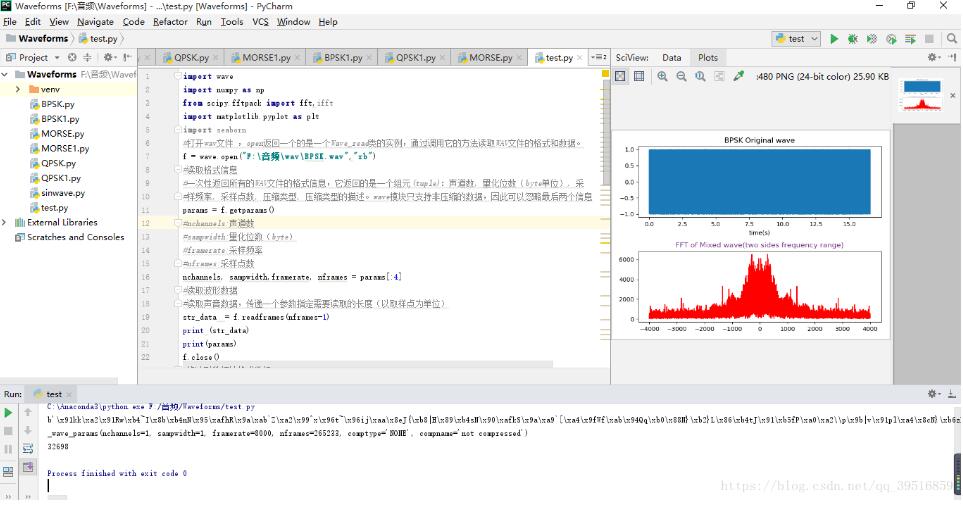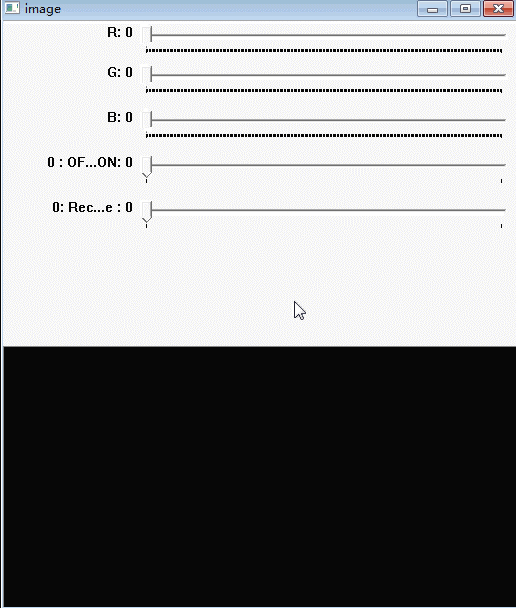Python的Flask框架中的Jinja2模板引擎学习教程
Flask的模板功能是基于Jinja2模板引擎来实现的。模板文件存放在当前目前下的子目录templates(一定要使用这个名字)下。
main.py 代码如下:
from flask import Flask, render_template
app = Flask(__name__)
@app.route('/hello')
@app.route('/hello/<name>')
def hello(name=None):
return render_template('hello.html', name=name)
if __name__ == '__main__':
app.run(debug=True)
hello.html代码如下:
<!DOCTYPE html>
<html lang="en">
<head>
<meta charset="UTF-8">
<title>Hello Sample</title>
</head>
<body>
{% if name %}
<h1>Hello {{ name }} !</h1>
{% else %}
<h1>Hello World!</h1>
{% endif %}
</body>
</html>
模板的表达式都是包含在分隔符”{{ }}”内的;控制语句都是包含在分隔符”{% %}”内的;另外,模板也支持注释,都是包含在分隔符”{# #}”内,支持块注释。
表达式
表达式一般有这么几种:
- 最常用的是变量,由Flask渲染模板时传过来,比如上例中的”name”
- 也可以是任意一种Python基础类型,比如字符串{{ “Hello” }},用引号括起;或者数值,列表,元祖,字典,布尔值。直接显示基础类型没啥意义,一般配合其他表达式一起用
- 运算。包括算数运算,如{{ 2 + 3 }};比较运算,如{{ 2 > 1 }};逻辑运算,如{{ False and True }}
- 过滤器“|”和测试器“is”。这个在后面会介绍
- 函数调用,如{{ current_time() }};数组下标操作,如{{ arr[1] }}
- “in”操作符,如{{ 1 in [1,2,3] }}
- 字符串连接符”~”,作用同Python中的”+”一样,如{{ “Hello ” ~ name ~ “!” }}
- “if”关键字,如{{ ‘Hi, %s' % name if name }}。这里的”if”不是条件控制语句。
控制语句
Jinja2的控制语句主要就是条件控制语句if,和循环控制语句for,语法类似于Python。我们可以改动下上节的模板代码:
{% if name and name == 'admin' %}
<h1>This is admin console</h1>
{% elif name %}
<h1>Welcome {{ name }}!</h1>
{% else %}
<h1>Please login</h1>
{% endif %}
上面是一个条件控制语句的例子,注意if控制语句要用”{% endif %}”来结束。模板中无法像代码中一样靠缩进来判断代码块的结束。再来看个循环的例子,我们先改下Python代码中的”hello”函数,让其传两个列表进模板。
def hello(name=None):
return render_template('hello.html', name=name, digits=[1,2,3,4,5],
users=[{'name':'John'},
{'name':'Tom', 'hidden':True},
{'name':'Lisa'}
{'name':'Bob'}])
模板如下:
{% if name and name == 'admin' %}
<h1>Helle admin</h1>
{% elif name %}
<h1>"Hello" ~ {{ name }} ~ "!"</h1>
{% else %}
<h1>Hello World!</h1>
{% endif %}
{% for digit in digits %}
{{ digit }}
{% endfor %}
同if语句一样,for控制语句要用”{% endfor %}”来结束。页面上,每个元素之间会有空格,如果你不希望有空格,就要在”for”语句的最后,和”endfor”语句的最前面各加上一个”-“号。如:
{% for digit in digits -%}
{{ digit }}
{%- endfor %}
你可以看到数字”12345″被一起显示出来了。我们再来看个复杂的循环例子:
<dl>
{% for user in users if not user.hidden %}
{% if loop.first %}
<div>User List:</div>
{% endif %}
<div class="{{ loop.cycle('odd', 'even') }}">
<dt>User No. {{ loop.index }}</dt>
<dd>{{ user.name }}</dd>
</div>
{% if loop.last %}
<dir>Total Users: {{ loop.length }}</dir>
{% endif %}
{% else %}
<li>No users found</li>
{% endfor %}
</dl>
这里有三个知识点。首先for循环支持else语句,当待遍历的列表”users”为空或者为None时,就进入else语句。
其次,在for语句后使用if关键字,可以对循环中的项作过滤。本例中,所有hidden属性为True的user都会被过滤掉。
另外,for循环中可以访问Jinja2的循环内置变量。本例中,我们会在第一项前显示标题,最后一项后显示总数,每一项显示序号。另外,奇偶项的HTML div元素会有不同的class。如果我们加入下面的CSS style,就能看到斑马线。
<style type="text/css">
.odd {
background-color: #BDF;
}
</style>
Jinja2的循环内置变量主要有以下几个:
|
1
2
3
4
5
6
7
8
9
10
11
12
|
from flask import Flask, render_template
app = Flask(__name__)
@app.route('/hello')
@app.route('/hello/<name>')
def hello(name=None):
return render_template('hello.html', name=name)
if __name__ == '__main__':
app.run(debug=True)
|
另外,如果你启用了”jinja2.ext.loopcontrols”扩展的话,你还可以在循环中使用”{% break %}”和”{% continue %}”来控制循环执行。
其它常用语句:
忽略模板语法
有时候,我们在页面上就是要显示”{{ }}”这样的符号怎么办?Jinja2提供了”raw”语句来忽略所有模板语法。
{% raw %}
<ul>
{% for item in items %}
<li>{{ item }}</li>
{% endfor %}
</ul>
{% endraw %}
自动转义
我们将本文一开始的Flask代码”hello()”方法改动下:
@app.route('/hello')
@app.route('/hello/<name>')
def hello(name=None):
if name is None:
name = '<em>World</em>'
return render_template('hello.html', name=name)
此时,访问”http://localhost:5000/hello”,页面上会显示”Welcome <em>World</em>!”,也就是这个HTML标签”<em>”被自动转义了。Flask会对”.html”, “.htm”, “.xml”, “.xhtml”这四种类型的模板文件开启HTML格式自动转义。这样也可以防止HTML语法注入。如果我们不想被转义怎么办?
{% autoescape false %}
<h1>Hello {{ name }}!</h1>
{% endautoescape %}
将”autoescape”开关设为”false”即可,反之,设为”true”即开启自动转义。使用”autoescape”开关前要启用”jinja2.ext.autoescape”扩展,在Flask框架中,这个扩展默认已启用。
赋值
使用”set”关键字给变量赋值:
{% set items = [[1,2],[3,4,5]] %}
with语句
类似于Python中的”with”关键字,它可以限制with语句块内对象的作用域:
{% with foo = 1 %}
{% set bar = 2 %}
{{ foo + bar }}
{% endwith %}
{# foo and bar are not visible here #}
使用”with”关键字前要启用”jinja2.ext.with_”扩展,在Flask框架中,这个扩展默认已启用。
执行表达式
{% with arr = ['Sunny'] %}
{{ arr.append('Rainy') }}
{{ arr }}
{% endwith %}
看上面这段代码,我们想执行列表的”append”操作,这时使用”{{ arr.append(‘Rainy') }}”页面会输出”None”,换成”{% %}”来执行,程序会报错,因为这是个表达式,不是语句。那怎么办?我们可以启用”jinja2.ext.do”扩展。然后在模板中执行”do”语句即可:
{% with arr = ['Sunny'] %}
{% do arr.append('Rainy') %}
{{ arr }}
{% endwith %}
上下文环境
Flask每个请求都有生命周期,在生命周期内请求有其上下文环境Request Context。作为在请求中渲染的模板,自然也在请求的生命周期内,所以Flask应用中的模板可以使用到请求上下文中的环境变量,及一些辅助函数。本文就会介绍下这些变量和函数。
标准上下文变量和函数
请求对象request
request对象可以用来获取请求的方法”request.method”,表单”request.form”,请求的参数”request.args”,请求地址”request.url”等。它本身是一个字典。在模板中,你一样可以获取这些内容,只要用表达式符号”{{ }}”括起来即可。
<p>{{ request.url }}</p>
在没有请求上下文的环境中,这个对象不可用。
会话对象session
session对象可以用来获取当前会话中保存的状态,它本身是一个字典。在模板中,你可以用表达式符号”{{ }}”来获取这个对象。
Flask代码如下,别忘了设置会话密钥哦:
@app.route('/')
def index():
session['user'] = 'guest'
return render_template('hello.html')
app.secret_key = '123456'
模板代码:
<p>User: {{ session.user }}</p>
在没有请求上下文的环境中,这个对象不可用。
全局对象g
全局变量g,用来保存请求中会用到全局内容,比如数据库连接。模板中也可以访问。
Flask代码:
@app.route('/')
def index():
g.db = 'mysql'
return render_template('hello.html')
模板代码:
<p>DB: {{ g.db }}</p>
g对象是保存在应用上下文环境中的,也只在一个请求生命周期内有效。在没有应用上下文的环境中,这个对象不可用。
Flask配置对象config
导入的配置信息,就保存在”app.config”对象中。这个配置对象在模板中也可以访问。
<p>Host: {{ config.DEBUG }}</p>
“config”是全局对象,离开了请求生命周期也可以访问。
url_for()函数
url_for()函数可以用来快速获取及构建URL,Flask也将此函数引入到了模板中,比如下面的代码,就可以获取静态目录下的”style.css”文件。
<link rel="stylesheet" href="{{ url_for('static', filename='style.css') }}">
该函数是全局的,离开了请求生命周期也可以调用。
get_flashed_messages()函数
get_flashed_messages()函数是用来获取消息闪现的。这也是一个全局可使用的函数。
自定义上下文变量和函数
自定义变量
除了Flask提供的标准上下文变量和函数,我们还可以自己定义。下面我们就来先定义一个上下文变量,在Flask应用代码中,加入下面的函数:
from flask import current_app @app.context_processor def appinfo(): return dict(appname=current_app.name)
函数返回的是一个字典,里面有一个属性”appname”,值为当前应用的名称。我们曾经介绍过,这里的”current_app”对象是一个定义在应用上下文中的代理。函数用”@app.context_processor”装饰器修饰,它是一个上下文处理器,它的作用是在模板被渲染前运行其所修饰的函数,并将函数返回的字典导入到模板上下文环境中,与模板上下文合并。然后,在模板中”appname”就如同上节介绍的”request”, “session”一样,成为了可访问的上下文对象。我们可以在模板中将其输出:
<p>Current App is: {{ appname }}</p>
自定义函数
同理我们可以自定义上下文函数,只需将上例中返回字典的属性指向一个函数即可,下面我们就来定义一个上下文函数来获取系统当前时间:
import time
@app.context_processor
def get_current_time():
def get_time(timeFormat="%b %d, %Y - %H:%M:%S"):
return time.strftime(timeFormat)
return dict(current_time=get_time)
我们可以试下在模板中将其输出:
<p>Current Time is: {{ current_time() }}</p>
<p>Current Day is: {{ current_time("%Y-%m-%d") }}</p>
上下文处理器可以修饰多个函数,也就是我们可以定义多个上下文环境变量和函数。
完整实例:
flask代码:
from flask import Flask, render_template, session, g, current_app
import time
app = Flask(__name__)
@app.route('/')
def index():
session['user'] = 'guest'
g.db = 'mysql'
return render_template('hello-2.html')
@app.context_processor
def appinfo():
return dict(appname=current_app.name)
@app.context_processor
def get_current_time():
def get_time(timeFormat="%b %d, %Y - %H:%M:%S"):
return time.strftime(timeFormat)
return dict(current_time=get_time)
app.secret_key = '123456'
if __name__ == '__main__':
app.run(debug=True)
模板代码:
<!doctype html>
<title>Hello Sample</title>
<link rel="stylesheet" href="{{ url_for('static', filename='style.css') }}">
<h1>Hello World!</h1>
<p>Request URL: {{ request.url }}</p>
<p>User: {{ session.user }}</p>
<p>DB: {{ g.db }}</p>
<p>Host: {{ config.DEBUG }}</p>
<p>Current App is: {{ appname }}</p>
<p>Current Time is: {{ current_time() }}</p>
<p>Current Day is: {{ current_time("%Y-%m-%d") }}</p>
{% with messages = get_flashed_messages() %}
{% if messages %}
{% for message in messages %}
Flash Message: {{ message }}</li>
{% endfor %}
{% endif %}
{% endwith %}

